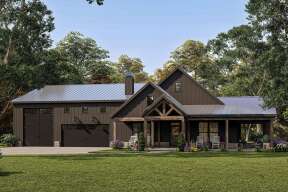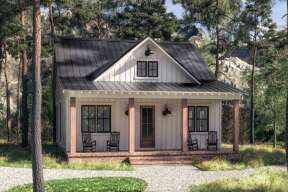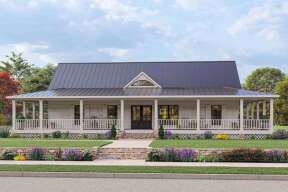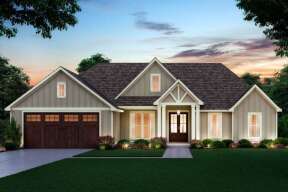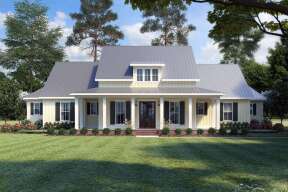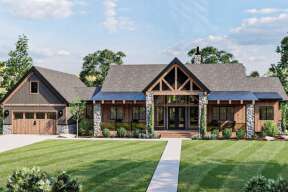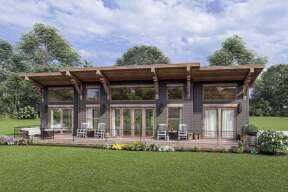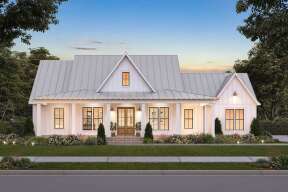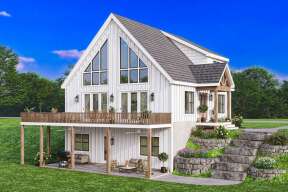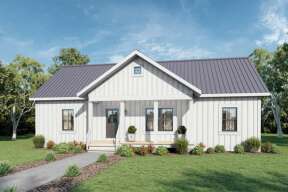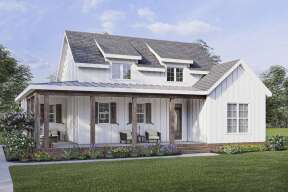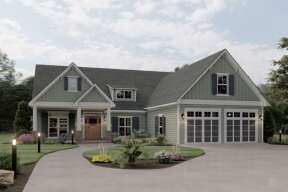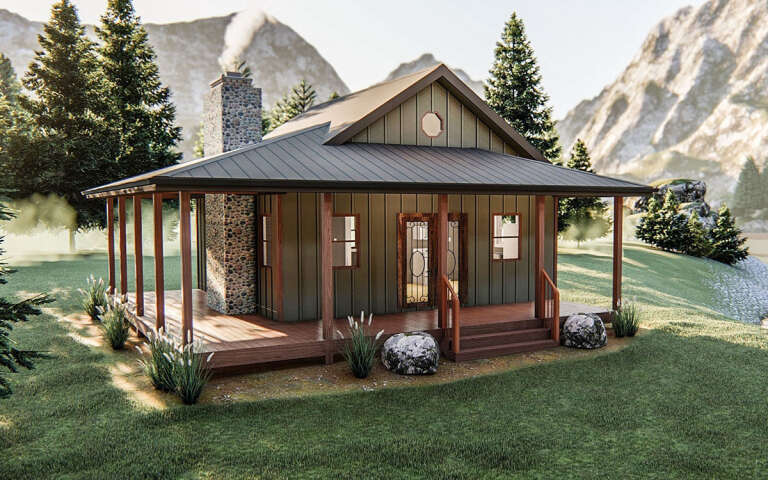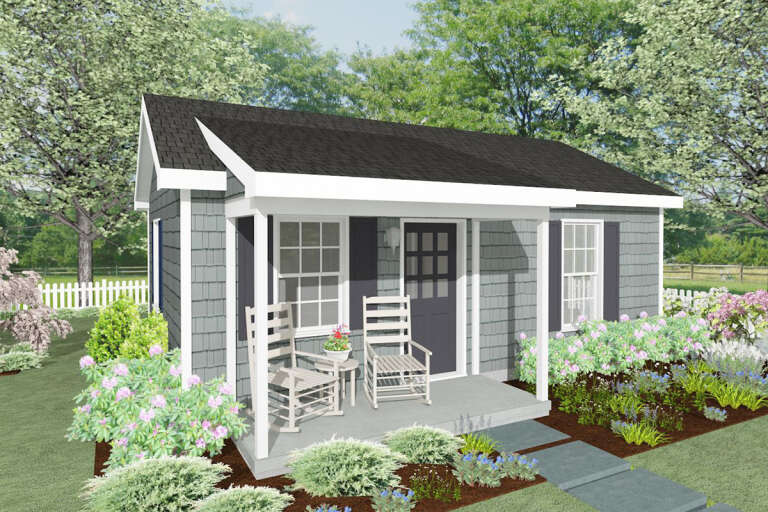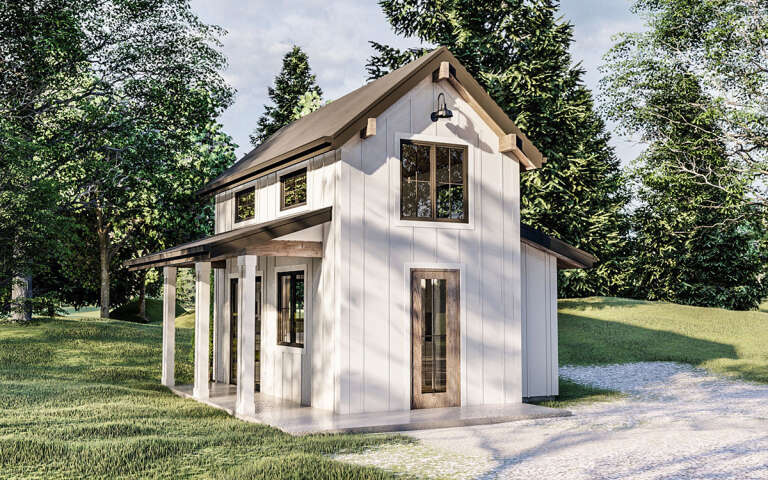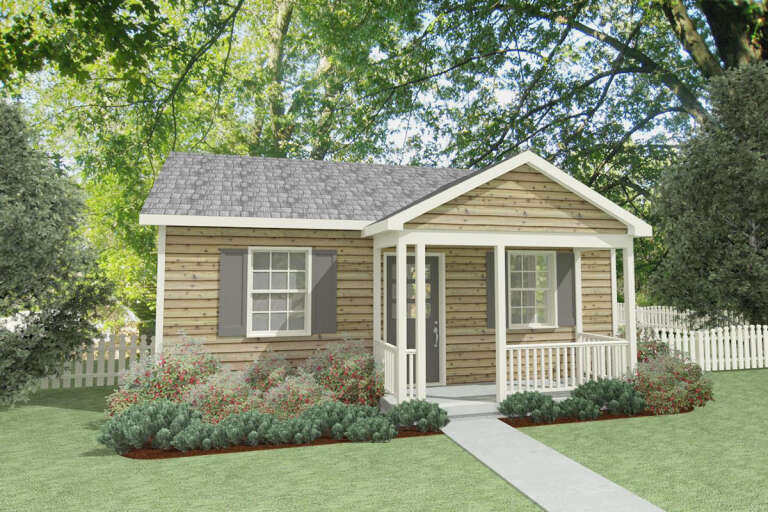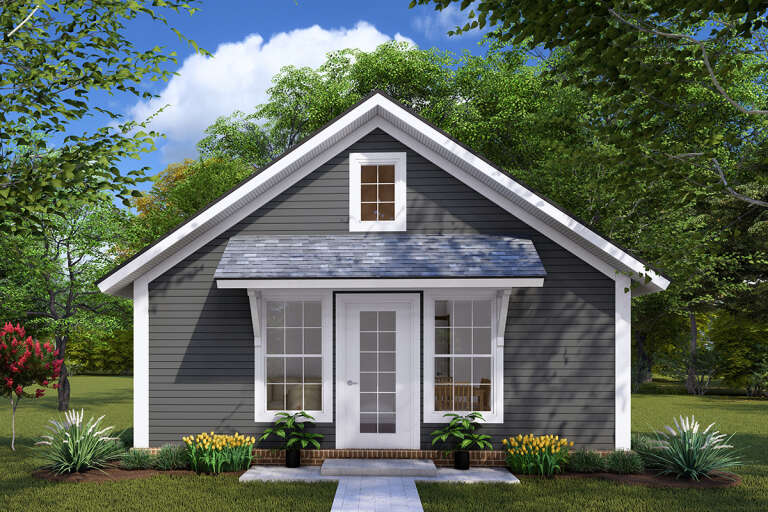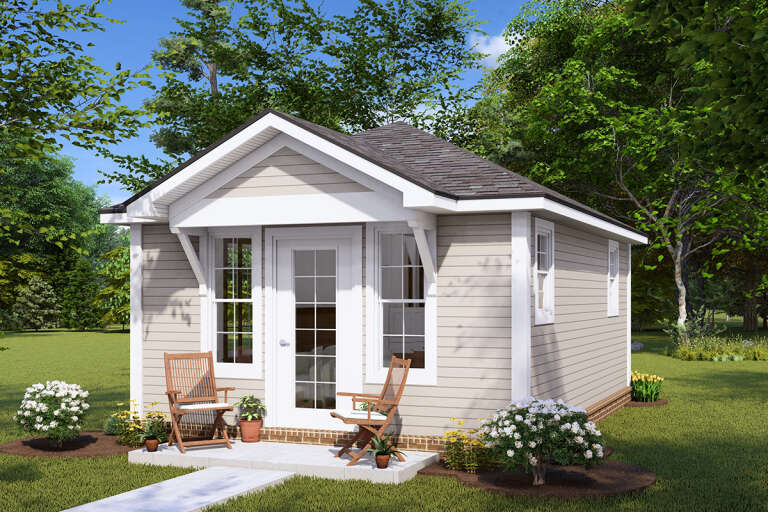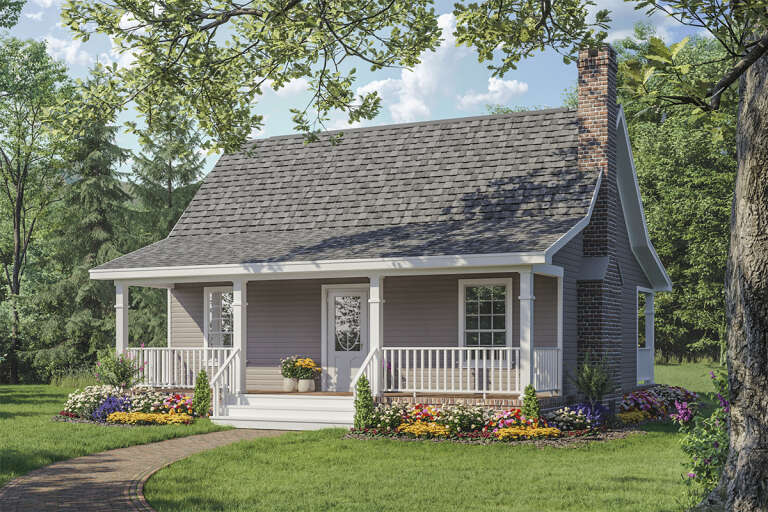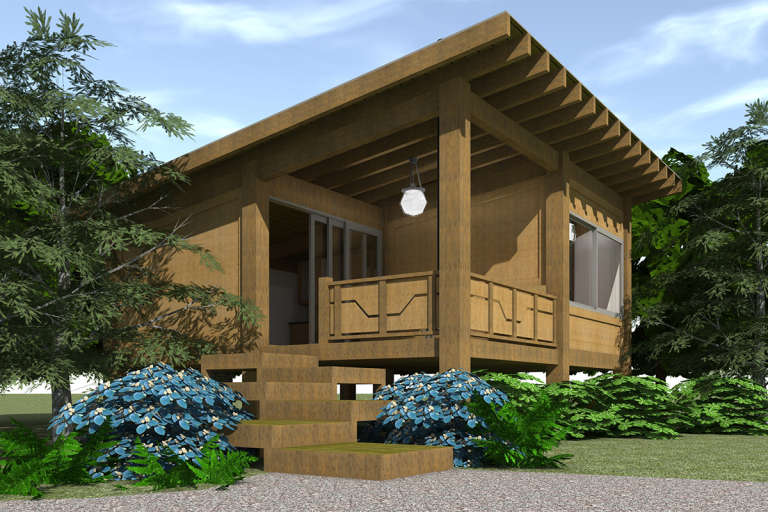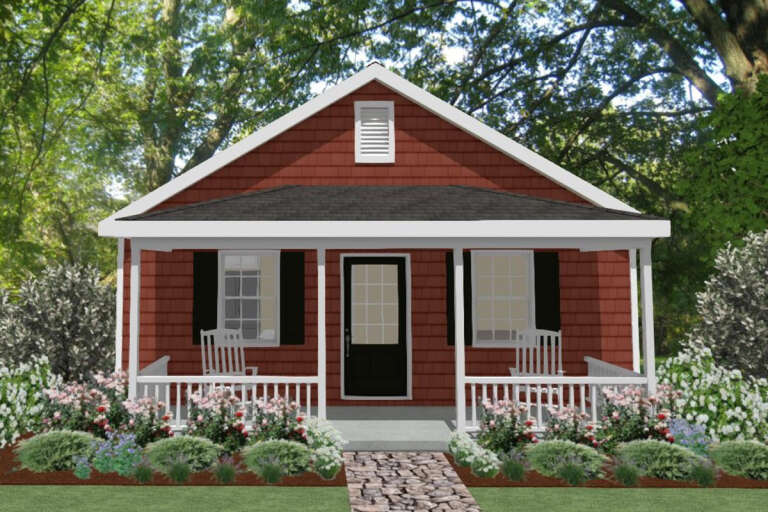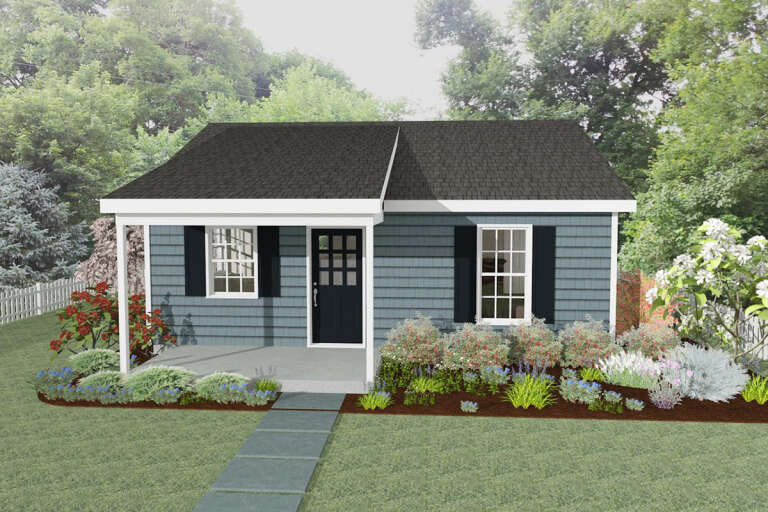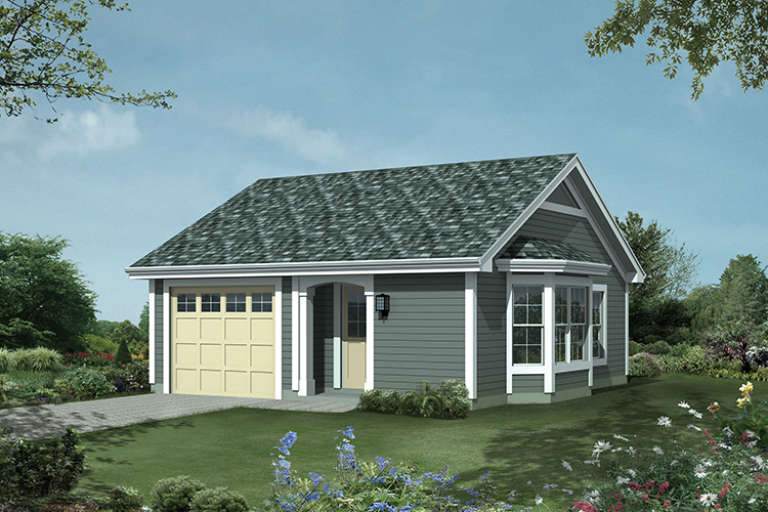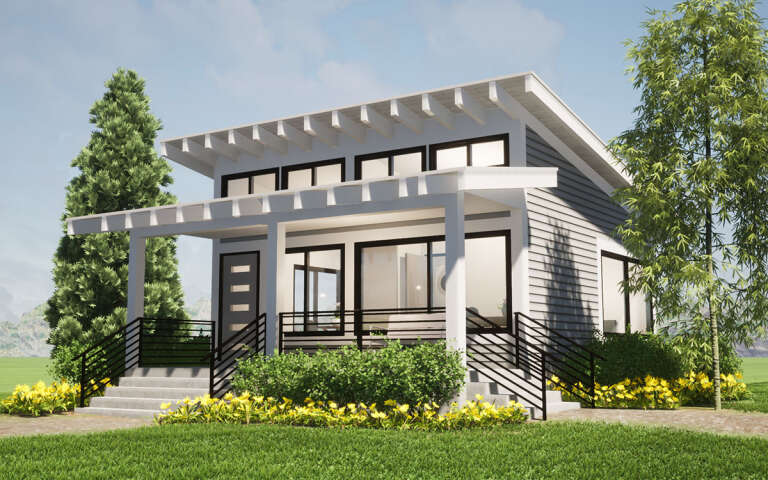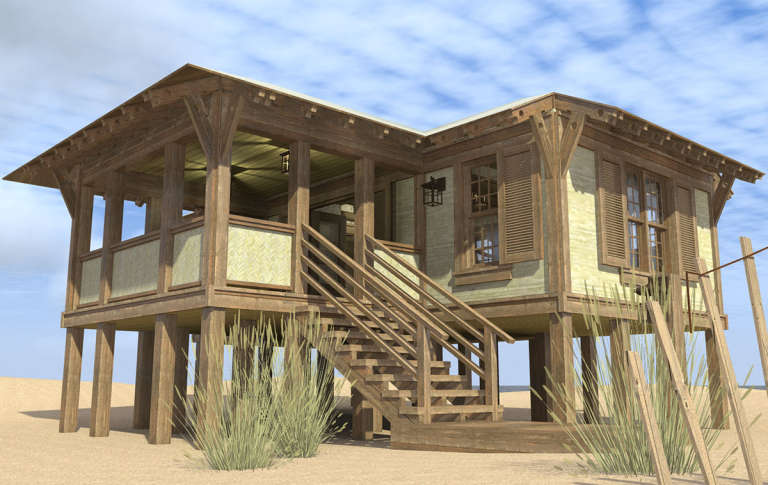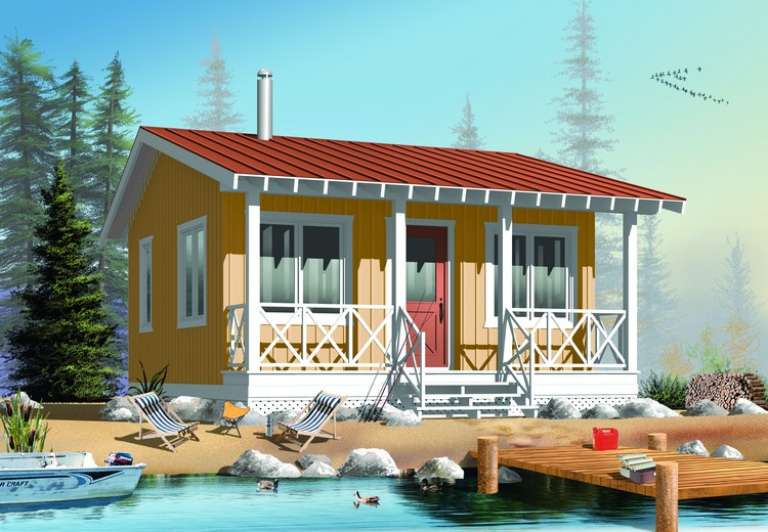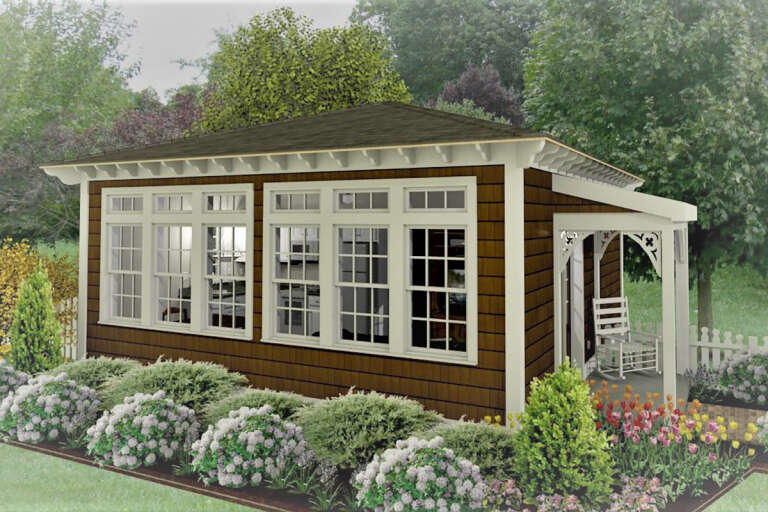80 Results
SORT BY
Tiny FAQ
Is 700 sq ft a tiny house?
No, a tiny house is defined as having an area of under 600 square feet. So, while 700 square feet is a small house plan, it doesn't constitute a tiny house.
What is the best size for a tiny house?
Tiny house plans range anywhere from a minimum of 60 square feet up to 600 square feet of space. Of course, the best size for a tiny house in that range will depend on your living circumstances. For instance, this could include how many people will be living in the home, if there are any pets you need to make room for, and how much additional space you want to be built into the house for storage or living.
Is it cheaper to build or buy a tiny house?
Since they are so small, tiny house floor plans are typically cheaper to build than buy; however, remember that this is a home, so it will require professional construction as any other home would. It’s not something that can just get slapped together on the weekend. A few mistakes can cost you thousands of dollars and void your initial savings by choosing to build a tiny house.
How long do tiny houses last?
One of the many appeals and benefits of tiny homes is that the homeowner can “pick up their house and go,” as many tiny homes are displayed as mobile. This appeals to those who dream of living across the country instead of having a single address. However, for sustainability, building a tiny stationary house with a foundation versus a mobile one could last as long as a traditional home if it’s properly maintained. Placing a tiny house on wheels to be driven across the country will eventually lead to wear and tear on the structure.
What US states allow tiny houses?
According to Business Insider, these are the top 10 most tiny home-friendly states in the US: Arizona, California, Colorado, Florida, New York, North Carolina, Oregon, Texas, Utah, and Washington. No states expressly outlaw tiny house plans.
How long does it take to build a tiny house?
On average, a team of professionals can tackle a tiny house plan within a few months. However, the average time for an owner builder may likely take longer. If you plan on building your own tiny house on the weekends, estimating it may take a little under a year to build is best.
Can a tiny house be 10 feet wide?
Yes, a tiny house can be 10 feet wide, though the standard width is usually around 8.5 feet wide.
How thick are the walls in a tiny house?
On average, walls in a tiny house are about five inches thick, like most homes. This allows for interior cladding, wall framing and insulation, sheathing, and outer siding.
What size is a standard bathroom in a tiny house?
Bathroom sizes in tiny house plans range from 25 to 50 square feet. Of course, this depends on what different functions you want your bathroom to encompass. For example, if you have a washer and dryer in your bathroom, your bathroom may become more significant than some other tiny home bathrooms. However, considering that the average bathroom in the U.S. is just 36-40 square feet, a tiny home bathroom is not much smaller than that says a lot about the ingenuity of packing a lot into a little amount of space!


